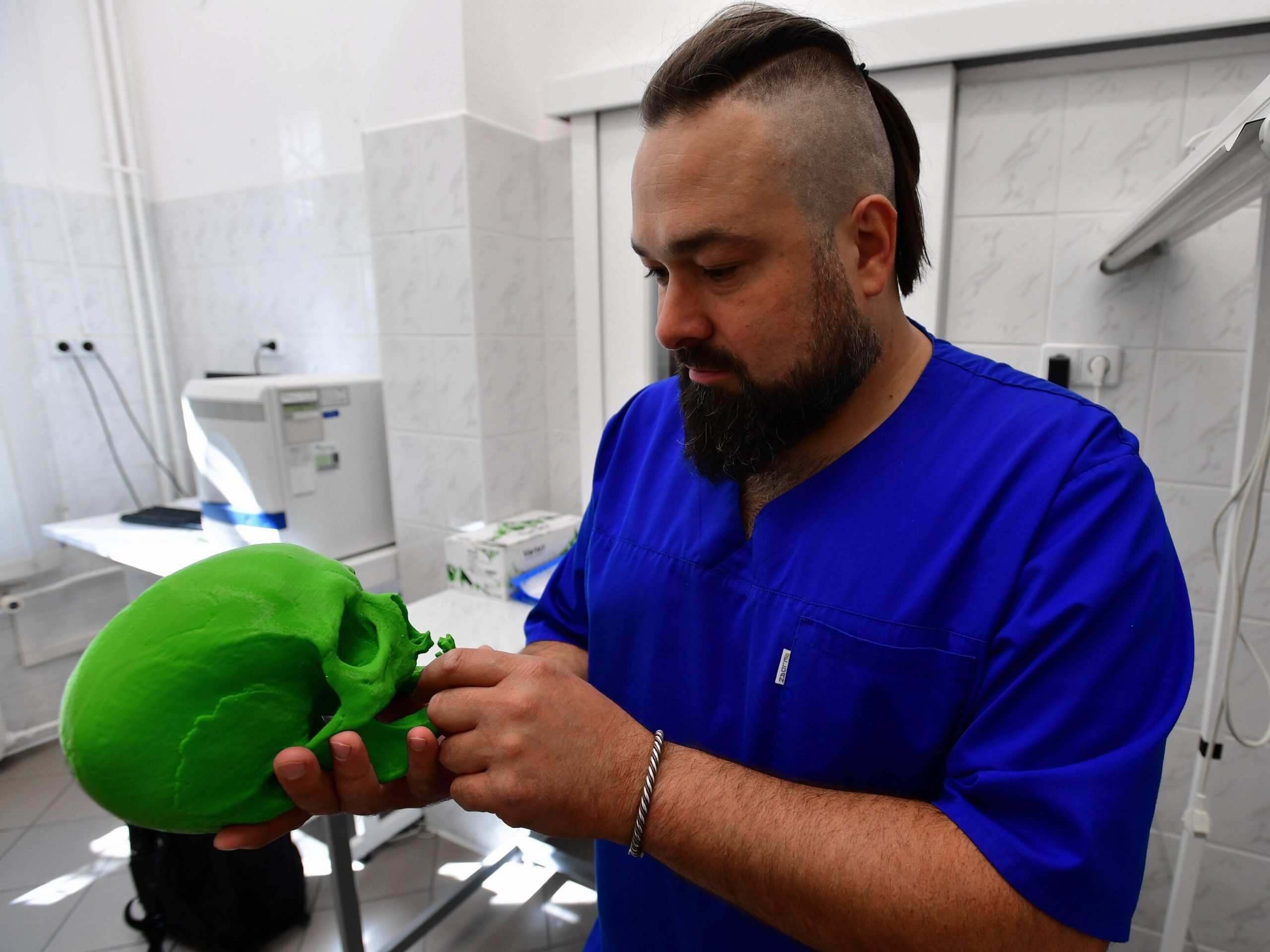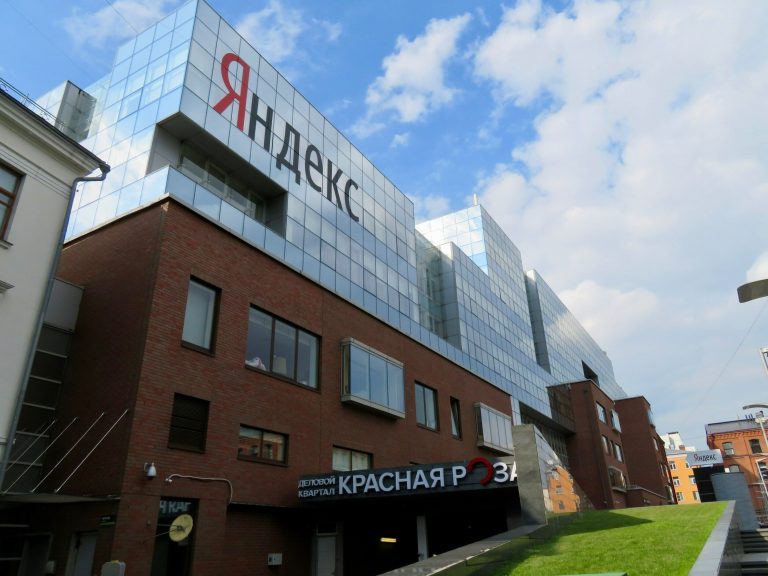Archaeologists pull bones out of storage and give them to geneticists. “The Adventure Has Just Begun”

Archeology and genetics? It turns out that they are a well-matched pair. DNA research can help – and already does – resolve scientific disputes and answer seemingly trivial questions, such as what color eyes our ancestors had.
DNA tests allow to determine the kinship of people, their origin, evolutionary lines, but also phenotypic features, i.e. the color of hair, skin and eyes. Today, thanks to genetics, archaeologists can pull bones out of storage and re-examine them, trying to find answers to long-standing questions.
Dr. Dariusz Błaszczyk from the Department of Medieval and Modern Archaeology, University of Warsaw: – DNA research in archaeology, i.e. the so-called archaeogenetics, is of great importance to archeology and has changed it greatly. First of all, it allowed to explore various previously inaccessible issues.
Prof. Andrzej Buko from the Institute of Archeology and Ethnology of the Polish Academy of Sciences: – These are revolutionary changes, but this does not apply only to archaeology. Archeology draws on other disciplines, so if medicine develops, so does archaeology.
New ways to solve old cases
An example of using genetic research to solve a mystery from years ago is a project led by prof. Buko, and Dr. Błaszczyk is one of the scientists participating in it. This mystery has remained unsolved for nearly 150 years. It’s about medieval cemeteries and graves with layers of stones. Such graves were found in Mazovia and Podlasie. And initially it was thought that they are characteristic of people from this region. Similar graves have also been found in Pomerania. The matter was complicated by research, during which cemeteries without stone enclosures were found in the same area. So who were the people buried in the characteristic cemeteries with stone enclosures?
“As usual, there were many ideas. Some researchers believed that the cemeteries were used by the local Slavic population. In the 1990s, the concept that they were created and used by newcomers from Scandinavia gained popularity, as graves in stone enclosures were also constructed there – explains Dr. Dariusz Błaszczyk. But these theories are not the only ones. In the 1950s, speculations were made that newcomers not from Scandinavia, but from the east, from Ruthenia, might be buried there. What’s the truth?
Dr. Błaszczyk explains that until recently, the only method available to archaeologists to determine the origin of those buried in cemeteries was the so-called ethnic attribution of burial forms and items included in the funerary furnishings. “It was assumed that the newcomers bring their customs and culture with them, including the funeral rite and the costume characteristic of a given ethnic group,” says the archaeologist and explains that by defining the characteristics of a given funeral rite, e.g. grave forms and characteristic, distinctive elements of clothing (in the case of the Slavs, these were, for example, temple rings, and in the case of the Scandinavians the so-called tortoise clasps), it is possible to determine the ethnic affiliation of people buried in cemeteries. However, this method works only partially. “People could acculturate to a new environment and adapt to new habits. The problem is that the objects found in the graves could also be the subject of exchange, trade or robbery and do not necessarily prove the ethnic affiliation of their owner – adds Dr. Błaszczyk.
And here comes new methods that help determine ethnicity, including DNA testing. And this is what was used in the research project on graves from Mazovia and Podlasie (Populus Masiviae Medii Aevi project). “We want to use new methods to answer an old question,” says Dariusz Błaszczyk. He does not reveal the effects yet – We are heading towards the end of the project – he only says.
At the same time, he evokes high-profile cases in the scientific world, where DNA research played a key role. This is, for example, the issue of the relationship between the species Homo sapiens and Homo neanderthalensis – as Dr. Błaszczyk reminds, it turned out that the Neanderthals are not our ancestors, but constitute a separate evolutionary line, one of the human subspecies. At the same time, it was proven that there was sexual contact between humans and Neanderthals and some of their genes survived in our genome, for example, we inherited red hair and some genes that support the body’s immunity from them.
But you can also look at your own backyard and the project carried out in the cathedral in Frombork, where a skeleton attributed to Nicolaus Copernicus and hair in a book belonging to him were used for DNA testing. Currently, scientists are impatiently waiting for the results of research carried out at the Institute of Bioorganic Chemistry of the Polish Academy of Sciences in Poznań under the supervision of prof. Marek Figlarowicz. Researchers are to answer questions about the genome and the origin of the Piast dynasty.
aDNA fresh and storage aDNA
However, extracting DNA from such old bones is not easy. He spoke about it many times, also in an interview with “Wprost”, dr hab. Andrzej Ossowski from the Department of Forensic Genetics of the Medical University of Szczecin. This is Ossowski’s band known, among others, from the identification of victims of Nazi and communist crimes, he is now trying to create a genetic profile of the knights who died in the Battle of Grunwald. This is a project planned for several years and very complicated, because we are talking about aDNA – ancient DNA, or fossil DNA. If successful, geneticists will be able to answer questions about the color of the eyes, hair, sex and determine the person’s bio-origin.
“Specific communities have their own characteristics that are common to a given group of people,” says Ossowski about bio-origin. And he recalls the international studies in which he participated. – It is about examining the remains of ten people found in the Sobibór extermination camp. It was assumed that they were activists of the anti-communist underground secretly murdered there. The genetic profiles of the victims had to be checked against material in genetic databases. And it turned out that – to everyone’s surprise – they were not people of Polish descent, because genetic profiles similar to those of the victims are found among contemporary Ashkenazi Jews – he says.
The geneticist emphasizes that DNA is a very delicate matter. In the case of such old bones as those from the battlefields from 600 years ago, it is best to look for it in the best preserved femurs, teeth, and some skull bones.
Dr. Błaszczyk explains that nowadays samples for DNA testing are often taken directly at an archaeological site during excavations, or shortly after – in the jargon it is sometimes referred to as “fresh aDNA”. – At the same time, however, DNA testing has become one of the research methods that enabled the study and return to materials that were dug up in the past and then stored in museum warehouses, sometimes referred to as storage aDNA – he says and adds:
And it should be noted here that the adventure in this area is just beginning, research on fossil DNA is gaining momentum and there are still many interesting and groundbreaking discoveries ahead.
Thanks to DNA analysis, archaeologists can obtain precise knowledge about the directions of migration of entire human groups, but also of individual individuals. It was paleogenetics that showed how the bridge between Europe and Asia was created. An international study involving scientists from Poland, the results of which were published in the journal “Science” provided data on the entire genomes of 727 ancient people from the region of the so-called the Southern Arc, stretching from the Caucasus and the Levant, through Anatolia and the Aegean region to the Balkans, constituting a bridge connecting Europe and Asia. This knowledge allowed to fill gaps in the paleogenetic record of Indo-Europeans. It turned out that south-eastern Europe is inhabited by people genetically identical to the steppe people.
The ability to determine the haplogroup of the examined remains turned out to be crucial for tracking the migration of the population. A haplogroup is, in the simplest terms, a group of similar haplotypes due to the common origin, i.e. a series of alleles of genes located in a specific place on the chromosome. If the occurrence of haplogroups is examined, the migration of entire populations can be tracked. Special maps have been created that show, for example, the distribution of DNA haplogroups of the Y chromosome (people with a common biological origin, passed in the male line).
A challenge for Polish archaeology
Prof. Speaking about the revolution and the possibilities offered by genetics, Andrzej Buko points out that archeology is an interdisciplinary field and genetics alone is not enough. This is the case, for example, in the aforementioned studies of medieval cemeteries.
– Here we combine several methods that will allow us to answer questions about the people whose remains we are examining as precisely as possible. It is not only the DNA test itself, but also determining the age of each sample using C14 dating or testing stable isotopes of oxygen and strontium, says the archaeologist.
The problem faced by scientists is primarily the state of the research material. This, at least, still does not allow to clearly determine the ethnogenesis and the still disputed issue of the origin of the Slavs.
– Even the best methods will not solve the research problem if the appropriate research material is not available. The problem is that in the Polish lands and neighboring areas from the Middle Bronze Age to the early Middle Ages, the cremation rite was used. Burnt bones, with some exceptions, generally prevent genetic and isotope testing. It is true that in this period there are also skeletal burials, but they are few. Inhumation reappears with the introduction of Christianity in the 10th century. Nevertheless, I believe that, despite these limitations, biochemical research could be attempted on the available materials. In my opinion, this is undoubtedly a challenge that Polish archeology should face – concludes Dr. Dariusz Błaszczyk.






